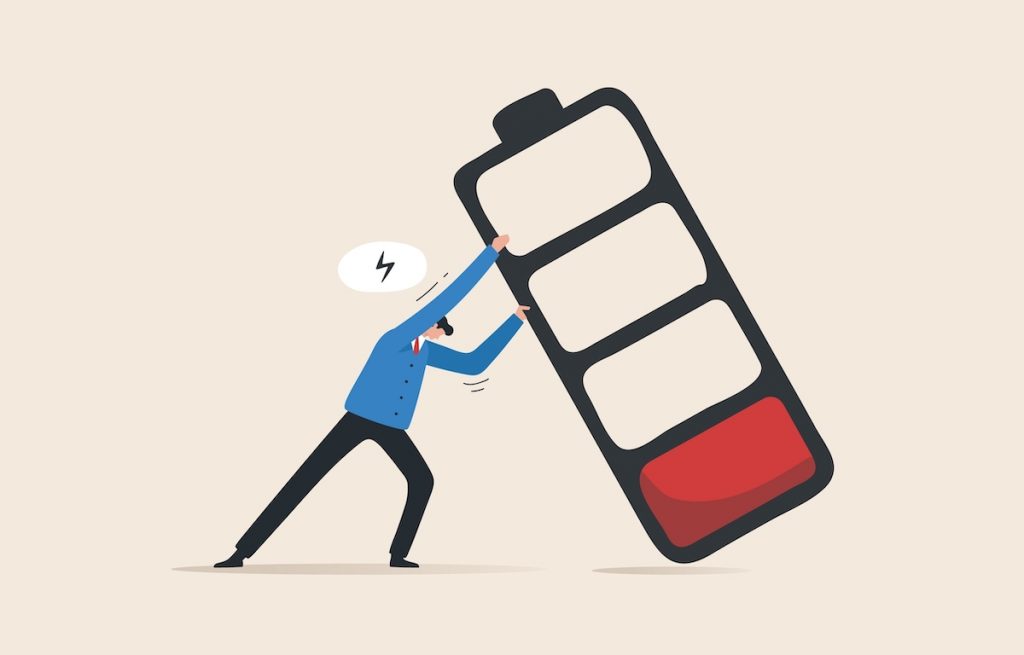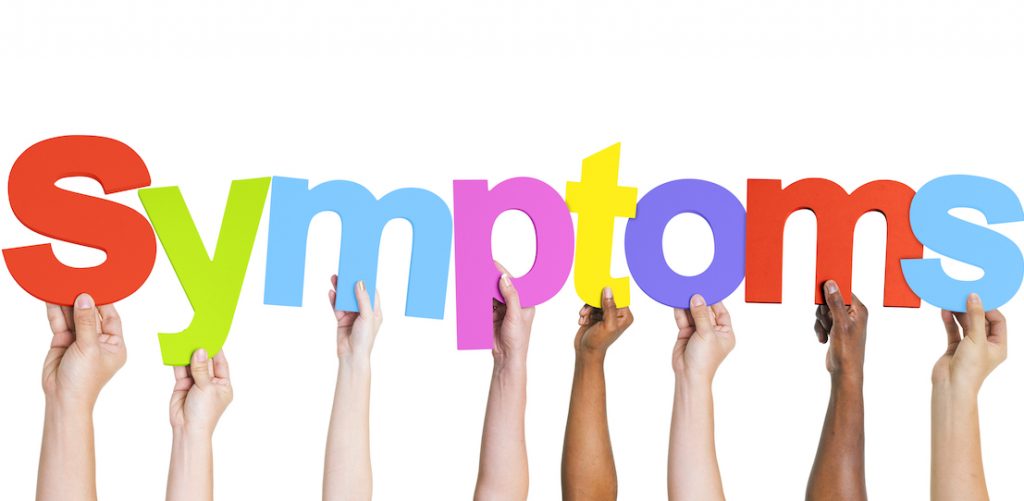
Fatigue is a common and disabling somatic symptom of depression (Kapfhammer, 2006). For example, in a research sample of 465 depressed adolescents’, fatigue was reported by 73.3% (Goodyer et al., 2017). Fatigue increases the risk of social and functional impairment, suicide and anxiety (Nyer et al., 2015). It is associated with higher economic burden (Robinson et al., 2015) and is a residual symptom, increasing the risk of relapse (Fava et al., 2014).
Current psychological treatments for depression are yielding moderate effectiveness at best, whilst pharmacological treatments are less effective at treating fatigue compared to other depression symptoms (Nierenberg et al., 1999; Nierenberg et al., 2010). Research also suggests fatigue may impact adolescents’ ability to engage in psychological treatments for depression (Herring et al., 2021; Watson et al., 2020).
An additional concern is that psychological treatments for depression in adolescents are extensions of treatment protocols designed for adults. As an adult who experienced fatigue whilst diagnosed with depression as a teenager, this resonated with me as particularly problematic, since adolescents can experience different depression symptoms to adults.
To improve treatment effectiveness for adolescent depression, we need to identify the symptoms which are experienced as being most “prevalent and problematic” (Higson-Sweeney et al., 2023). This qualitative study explored the experience of fatigue in adolescents with elevated symptoms depression, with the aim of understanding how fatigue interacts with other symptoms of depression and how it impacts adolescent’s lives.

Fatigue is the most commonly reported somatic symptom of depression in adolescents.
Methods
Adolescents (N=19) with elevated depression symptoms were recruited from child and adolescent mental health services (CAMHS) in the South West of England and via online adverts. This recruitment method aimed to extend the sample’s reachability to those adolescents who were not accessing CAMHS.
Participants were screened for eligibility for depression symptoms using the Short Mood and Feelings Questionnaire (SMFQ) and for fatigue symptoms using the Chalder Fatigue Scale (CFS). Adolescents who were at high risk of self-harm and/or suicide were excluded from recruitment.
Participant characteristics were collected including age, gender, ethnicity, self-reported co-morbid disorders and current or historical contact with CAMHS.
Information power guided the recruitment process. Qualitative data was collected via semi-structured interviews and was analysed using reflexive thematic analysis.
Results
The authors generated three themes through thematic analysis.
Theme 1: Fatigue is a complex concept
This theme explored ‘fatigue’ as a term to describe the experience, how it is conceptualised by adolescents and how it is experienced physically and psychologically.
Fatigue is not an everyday term
The authors report that adolescents used a variety of terms to describe the experience of fatigue. Most, but not all, adolescents knew the definition of fatigue. Adolescents did not feel they would use fatigue in everyday language, rather reserving it for appointments, deeming it a ‘medical’ term.
The tiredness fatigue continuum
Adolescents identified tiredness as a common experience among their peers, but fatigue was described as a level of tiredness which was ‘problematic’. Fatigue was viewed as being the ‘extreme’ on the spectrum of tiredness. Adolescents also viewed fatigue as a “dynamic” experience which could change in presence or severity throughout the day.
Experienced mentally, manifests physically
Mental and physical fatigue appeared to be viewed as distinct experiences by adolescents, with mental fatigue being perceived as more difficult to treat. Adolescents attributed physical treatments for physical fatigue, i.e., sleep time, which was not viewed as helpful by adolescents for mental fatigue.
Mental fatigue was viewed as a consequence of coping with other depressive symptoms. However, adolescents acknowledged that mental and physical fatigue was hard to distinguish and could both present physically. The authors note this elicited a sense of hopelessness.
Theme 2: Trapped in a cycle of fatigue
This theme encompassed the ways in which adolescents felt trapped by fatigue.
All roads lead to fatigue
The authors identified that adolescents felt fatigue had many triggers. These ranged from ruptures in relationships, unexpected tasks and school demands. Adolescents also identified other depressive symptoms as triggers for fatigue.
Difficulty disentangling fatigue from other depressive symptoms
Not only did depressive symptoms trigger fatigue, but they were also described by adolescents as being intertwined. The authors made sense of adolescent’s accounts as being akin to a ‘domino effect’, fatigue was described as linking with and exacerbating other symptoms.
No energy to engage
The authors identified that adolescents experienced fatigue as an absence of energy, leaving “a pool of minimal resources”. This limited adolescents’ capacity to cope with daily demands, academic learning and attendance, social activities and therapy for depression, leaving them feeling guilty and isolated.
Disrupting the cycle: protective factors
The authors identified two protective factors described by adolescents as a way of managing fatigue. Distraction was commonly used by adolescents as a low demand technique that enabled them to focus on something other than fatigue. Engaging in healthy practices such as eating well, keeping hydrated and exercise was also described. Exercise appeared to provide psychological benefit and possibly reduce feelings of guilt around fatigue, as adolescents noted that it was usual to feel tired after being active.
Theme 3: Stigma as a barrier to help-seeking
The authors conceptualised this theme as encompassing how internal and external stigma around fatigue can act as a barrier to help-seeking.
Blaming self for fatigue
Adolescents appeared highly critical of their inability to engage in activities and tasks to the same degree as their non-fatigued peers. Societal notions of ‘laziness’ in the absence of productivity led to self-blame, this extended to engaging in respite activities to manage fatigue.
Lack of understanding from others
External criticism was commonly experienced by adolescents from family and friends. Others did not understand fatigue as a depressive symptom, rather a physical tiredness which could be aided by sleep, leading to adolescents feeling misunderstood.
Whereas, some adolescents appeared to conceptualise their fatigue as non-physical and therefore less tangible which made help-seeking seem pointless. The authors note self-criticism as influencing this further as fatigue was described as not being seen as ‘important enough’ to seek help for.

The personal accounts of adolescents indicated that they may feel trapped in a vicious cycle of fatigue contributing to their lived experience of depression.
Conclusions
The authors conclude that fatigue as a depressive symptom “is a common but complex phenomenon”. Fatigue is conceptualised as a multifaceted, dynamic symptom which is at the extreme end of a continuum. Adolescents feel trapped by the cycle of fatigue, which the authors note has bio-psycho-social components and appears to contribute, and be contributed to, by other depressive symptoms.
Fatigue appears to impact adolescents’ day-to-day lives and their ability to engage in activities and therapy. Adolescents appear self-critical of how fatigue impacts their engagement and tend to feel criticised by others. Help-seeking is prevented due to notions of fatigue not being significant enough for treatment. The authors advise further research is needed “to establish how these manifestations are addressed”.

Fatigue as a symptom of depression is common in adolescents, but complex to conceptualise.
Strengths and limitations
The authors note the strength of inclusivity that including online participant recruitment enabled, as this made it possible to recruit participants who were not accessing CAMHS. This is important, as it extended reachability to include adolescents who had not been formally diagnosed with Major Depressive Disorder, had not accessed services, or who had historically been admitted to CAMHS. In 2018, an average 77% of adolescents obtained a successful referral to CAMHS (Bell, 2018), leaving 23% of adolescents without access to mental health support. It is my view that including non-CAMHS adolescents improves representativeness of adolescents experiencing depression symptoms in the UK. Future research could extend their recruitment to independent and charity services.
The authors note that the sample was not demographically diverse, being mainly white British and cisgender, which may limit the representativeness of the sample. However, the sample included three non-binary and one transgender adolescent out of the 19 participants. It is possible that this could be in proportion to the wider population of adolescents in the UK. Current statistics of gender identity for young people in the UK are limited. The most recently known is a census from 2021 which reported young people (aged 16-24) were the most likely group out of those analysed to report their gender identity as being different from their sex assigned at birth, estimated as being 1% (Office for National Statistics, 2023). The lack of information around gender identity demographics in the UK amongst adolescents poses difficulty for researchers to ensure accurate representation in their sample compared to the wider target population.
As a person with lived experience of adolescent depression, I felt a particular strength of this study was the involvement of a youth advisory group throughout the research process. The authors note this allowed for reflexivity, which I think is particularly important when making sense of others experiences of depressive symptoms such as fatigue, which can be varied and complex.

Youth advisory groups enable young people to share their experiences and contribute to research.
Implications for practice
This exploratory study has provided key implications for clinical practice. Although fatigue is commonly experienced in adolescent depression, it is not well understood by the adolescents experiencing it or those around them. Psychoeducation and awareness of fatigue as a depressive symptom in treatment and mental health campaigns may aid this. It would be interesting to see if increased understanding of fatigue would reduce the stigma related to fatigue as indicated by the findings.
A further implication stems from the language around the experience of fatigue as being a potential barrier to treatment. As noted in the results, fatigue was described as a medical term and adolescents tended to use different language to express the experience of fatigue. Therefore, the authors advise clinicians to be aware of fatigue-related language such as motivation, tiredness, lack of energy, to ensure fatigue is not overlooked.
To improve treatments for adolescents experiencing fatigue as a depressive symptom, fatigue should be kept at the heart of the treatment process. The authors suggest adapting existing treatments as previous studies have suggested (Herring et al., 2021; Watson et al., 2021), but also integrating fatigue specific support as a part of therapy. By piloting these recommendations, research could make real and meaningful change in treating fatigue experienced by adolescents with elevated depression symptoms .

Psychoeducation on fatigue in relation to depression during psychological treatment may help adolescents to better understand their experiences.
Statement of interests
I have previously worked with authors Nina Higson-Sweeney and Maria Loades on other papers. Notably, Herring et al., (2023) which explored the experience of CBT in depressed adolescents who are fatigued.
Links
Primary paper
Higson-Sweeney, N., Cooper, K., Dunn, B. D., & Loades, M. (2023). “I’m always going to be tired”: A qualitative exploration of adolescents’ experiences of fatigue in depression. European Child & Adolescent Psychiatry. .
Other references
Bell, A. (2018). Children’s mental health services: The data behind the headlines.
Fava, M., Ball, S., Nelson, J. C., Sparks, J., Konechnik, T., Classi, P., … & Thase, M. E. (2014). Clinical relevance of fatigue as a residual symptom in major depressive disorder. Depression and anxiety, 31(3), 250-257.
Goodyer, I. M., Reynolds, S., Barrett, B., Byford, S., Dubicka, B., Hill, J., Holland, F., Kelvin, R., Midgley, N., Roberts, C., Senior, R., Target, M., Widmer, B., Wilkinson, P., & Fonagy, P. (2017). Cognitive-behavioural therapy and short-term psychoanalytic psychotherapy versus brief psychosocial intervention in adolescents with unipolar major depression (IMPACT): a multicentre, pragmatic, observer-blind, randomised controlled trial. Health technology assessment (Winchester, England), 21(12), 1–94.
Office for National Statistics (2023). Gender identity by age and sex of usual residents aged 16 years and over in England and Wales, Census 2021 data.
Herring, G.T., Loades, M.E., Higson-Sweeney N. et al. (2021). The experience of cognitive behavioural therapy in depressed adolescents who are fatigued. Psychol Psychother Theory Res Pract.
Nyer, M., Mischoulon, D., Alpert, J. E., Holt, D. J., Brill, C. D., Yeung, A., Pedrelli, P., Baer, L., Dording, C., Huz, I., Fisher, L., Fava, M., & Farabaugh, A. (2015). College students with depressive symptoms with and without fatigue: Differences in functioning, suicidality, anxiety, and depressive severity. Annals of Clinical Psychiatry: Official Journal of the American Academy of Clinical Psychiatrists, 27(2), 100–108.
WordRobinson, R. L., Stephenson, J. J., Dennehy, E. B., Grabner, M., Faries, D., Palli, S. R., & Swindle, R. W. (2015). The importance of unresolved fatigue in depression: costs and comorbidities. Psychosomatics, 56(3), 274-285.
Watson, R., Harvey, K., Pass, L., et al. (2021). A qualitative study exploring adolescents’ experience of brief behavioural activation for depression and its impact on the symptom of anhedonia. Psychol Psychother Theory Res Pract 94:266–288.
Photo credits
- Photo byTom Wilson on Unsplash
- Photo by Adrian Swancar on Unsplash
- Photo by Matthew Henry on Unsplash
